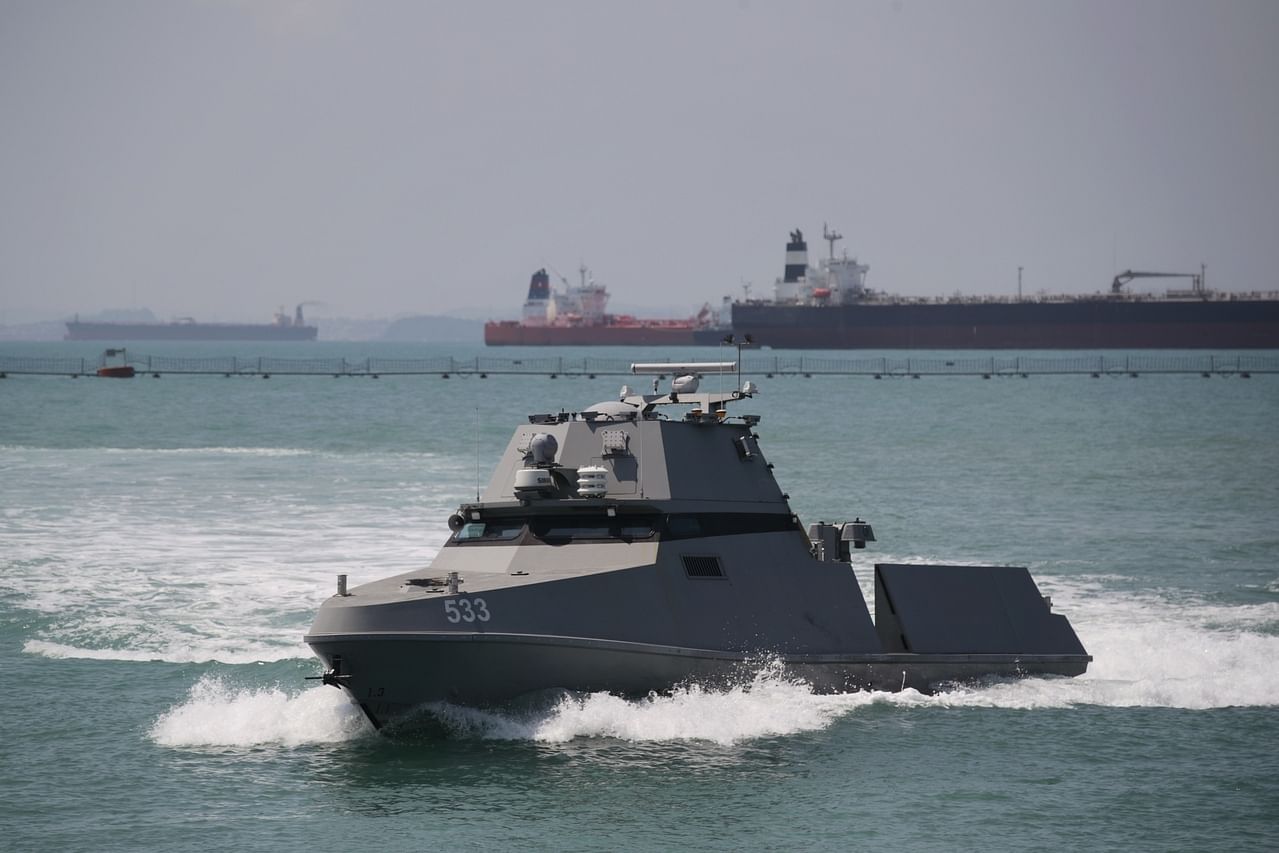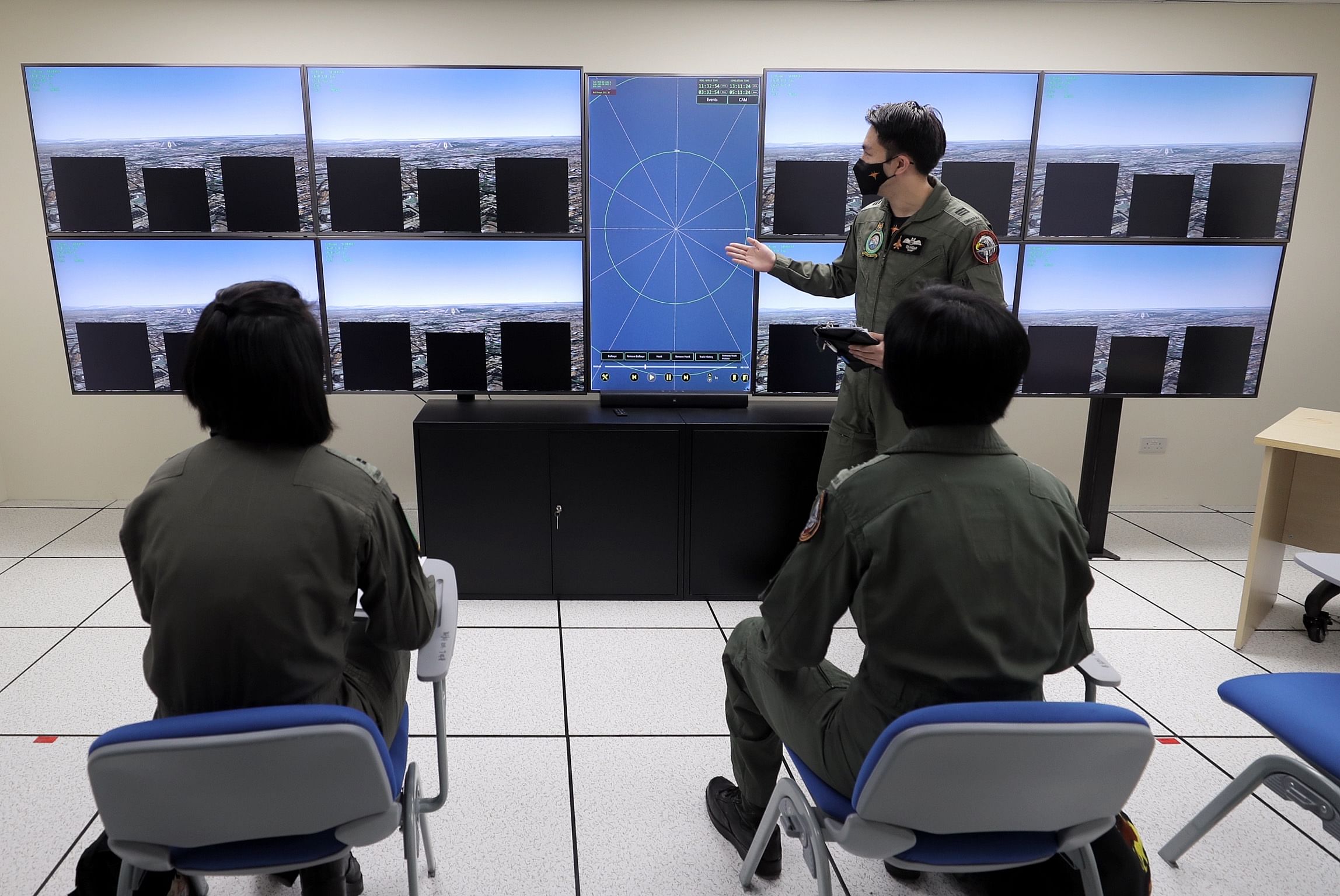Budget debate: Transformation to next-gen SAF on track despite Covid-19, says Ng Eng Hen
Sign up now: Get ST's newsletters delivered to your inbox

Combating transnational terrorist threats remains a key focus for the SAF.
ST PHOTO: GIN TAY
Fabian Koh
Follow topic:
SINGAPORE - Despite the pandemic, the transformation of the Singapore Armed Forces (SAF) into a new-generation defence force by 2040 remains on track, Defence Minister Ng Eng Hen said on Monday (March 1).
The delivery of new hardware such as helicopters and fighter jets is also still on schedule, along with the launch of new facilities and initiatives to sharpen the SAF's ability to meet emerging threats, Dr Ng said during the debate on the budget of the Ministry of Defence (Mindef).
Mindef's annual budget will climb 12.7 per cent to $15.36 billion, compared to the $13.63 billion it spent in the last financial year. This is the first year-on-year double digit growth since 1998, noted Dr Ng.
The reason for this is that Mindef spent about $1.5 billion less than planned in 2020 - about 10 per cent of its budget - due to the delay of some key projects.
For instance, the completion of military training facility Safti City will now be in 2024 instead of 2023, and the delivery of the navy's Invincible-class submarines has been pushed back by six months to mid-2022.
But Covid-19 related delays have not changed the SAF's timeline to transform into a next generation fighting force, said Dr Ng.
The Republic of Singapore Air Force's (RSAF) upgraded F-16 fighter jets are still expected to be rolled out in the coming months, and its earlier-acquired H225M and CH-47F multi-role helicopters will arrive this year to replace the older Super Pumas and Chinooks respectively.
"We remain on track to receiving four F-35 Joint Strike Fighters around 2026 and for the RSAF to start basing training in Guam from 2029 onwards," he added.
If the post-Covid recovery keeps pace, Mindef expects its budget to stabilise and return to a growth trajectory of about 3 to 4 per cent of nominal growth a year, a target announced in previous years, said Dr Ng.
SAF continuing its transformation
A new army "sense and strike" headquarters has also been established to help the SAF perform better in battle with less manpower.
Inaugurated last November, the new headquarters is part of the SAF's transformation into a next-generation defence force by 2040, by employing technologies such as artificial intelligence, robotics and data analytics.
"This was a reorganisation of HQ Army Intelligence and HQ Singapore Artillery under 6 Division to integrate capabilities from both to 'see better' and 'shoot faster' with less manpower," said Dr Ng.
He added that the Republic of Singapore Navy's (RSN) Maritime Security and Response Flotilla was also inaugurated. It consists of refurbished patrol vessels, with four new purpose-built vessels set to replace them in due course.
The RSN will also deploy unmanned surface vessels to keep watch over Singapore's waters once they complete their sea trials later this year, said Dr Ng.
Mindef said the four new unmanned vessels, the Maritime Security Unmanned Surface Vessels, or Marsec USVs, can be deployed to patrol Singapore's waters alongside manned ships, such as in the busy Singapore Strait.
The new vessels were developed by the Defence Science and Technology Agency and DSO National Laboratories, and are equipped with autonomous navigation systems and a locally developed collision detection and avoidance system.
The 16.9m-long USVs can operate for some 36 hours, allowing larger warships to be deployed more strategically for other missions and at farther ranges from Singapore.
Each autonomous USV needs only two crew members to operate it, as compared with a manned littoral mission vessel, which requires a 23-man crew.

Demonstrations of the Republic of Singapore Navy’s Unmanned Surface Vessels at Changi Naval Base, on Feb 23, 2021.
PHOTO: ST
The USV teams will consist of mainly full-time and operationally ready national servicemen, along with a small number of regular personnel.
Fighting terrorism, cyber attacks
In his speech, Dr Ng also emphasised that combating transnational terrorist threats remains a key focus for the SAF.
As Asean's collective intelligence and surveillance capability may be a fraction of what the United States and its allies have in the Middle East, the multilateral Counter-Terrorism Information Facility (CTIF) was created to close that gap.
"I am happy to announce to this House that the facility has been completed and has begun operations despite Covid-19," said Dr Ng.
The CTIF will bring together like-minded countries to share intelligence, and provide early warning, monitoring and analysis capabilities in a centralised and coordinated manner, he added.
The Cybersecurity Task Force has also been formed to enhance the SAF's ability to monitor potential cyber threats and respond more rapidly to incidents.
Dr Ng said that Mindef is working with academic institutions to raise national servicemen's skills in the cyber domain.
This includes initiatives such as the University Work-Learn Programme with the National University of Singapore, and the Critical Infrastructure Security Showdown cyber-security exercises with the Singapore University of Technology and Design's iTrust Centre for Research in Cyber Security.
The SAF will also hire more cyber specialists as regulars, mainly through the Military Domain Expert Scheme, said Dr Ng.

The Briefing Room at Paya Lebar Air Base, on Feb 25, 2021.
PHOTO: ST

The Instructor Operating Stations and Computer Generated Forces System at Paya Lebar Air Base, on Feb 25, 2021.
PHOTO: ST
Keeping up innovation
Dr Ng said harnessing new technologies will enable new war-fighting concepts and force multipliers for the SAF.
Mindef and the SAF will be adopting commercial cloud platforms from May this year to host less sensitive digital services, functions and data, such as administrative and maintenance services, said Dr Ng, adding that cloud computing is a key component in enhancing efficiency and reducing the need for manpower.
"Beyond this, classified information will also leverage cloud systems. As the security standards for these areas need to be more stringent, such systems will be physically housed in Mindef and SAF and separated from other day-to-day functions on the cloud," said Dr Ng.
The internal cloud system will provide NSFs and NSmen with better and more responsive digital services, he said.
Trials will begin in the second quarter of this year for an RSAF Mobile Healthcare app, which will provide personnel with one-stop access to the medical centre's healthcare management functions, such as appointment bookings, telemedicine and access to patients' healthcare records.
There are currently ongoing trials to use autonomous vehicles to transport personnel and supplies around SAF camps and bases to save manpower deployment, and for an RSAF Military Transport Fleet Management app to track journey details and maintenance records, reducing administrative time by 75 per cent.
The technological push is already evident in other ongoing projects in the different services.
For example, the RSAF uses the F-15SG Air Mission Trainer, a flight simulator that has been used for aircrew training since mid-2019.
It allows the RSAF to cut training costs for its fighter pilots and weapon systems officers to 14 per cent of physical flights, while also reducing training time significantly.

